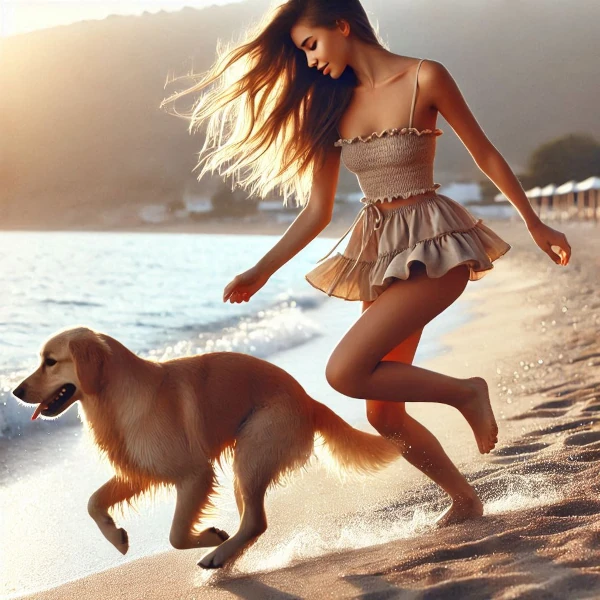
Engaging in physical activity with your dog is an excellent way to strengthen your bond while ensuring its physical and mental health. Many options are available, suitable for all breeds and energy levels.
Hiking: Ideal for sporty dogs and owners, hiking allows you to discover new landscapes while providing a complete workout. Make sure to adapt the duration and difficulty to your dog. Also, bring water and snacks to avoid dehydration and exhaustion.
Jogging: If your dog is in good physical condition, running together is an excellent way to expend its energy. Invest in a suitable harness for more comfort and start with short distances to gradually accustom it.
Biking: With specific equipment (such as a traction bar), you can practice bikejoring. This activity requires progressive training to avoid overexerting your dog. It is ideal for energetic large breeds.
Brisk Walking: An accessible alternative for all, brisk walking is suitable for dogs of all ages. It allows for regular physical activity without putting too much strain on the joints, especially for senior dogs.
Rollerblading: If you are comfortable on rollerblades, this activity can be an excellent way to let your dog run while working on its coordination. Use a harness and an elastic leash for more safety.
Outdoor Obstacle Course: Organize an improvised obstacle course in a park or your garden. This stimulates both your dog's agility and concentration.
Agility: This sport involves guiding your dog through an obstacle course. It is an excellent activity for reinforcing obedience, coordination, and concentration. Agility competitions also offer an additional challenge for owners and their companions.
Canicross: Similar to jogging, this discipline connects you to your dog via a belt and an elastic leash. It is ideal for active dogs who love to run. Canicross is often practiced in groups, which allows your dog to socialize.
Flyball: This team game combines running and object retrieval. Perfect for playful and sociable dogs, it develops their speed and natural hunting instinct. An excellent activity for dynamic dogs!
Rhythmic Obedience: A mix of dance and training, this activity involves performing synchronized choreographies with your dog. It develops its listening skills and strengthens your bond.
Herding: It's a canine sport inspired by the traditional tasks of herding dogs. It involves using your dog's natural instincts to move and direct animals such as sheep, cows, or even ducks through a marked course. This activity mentally and physically stimulates the dog while valuing its natural skills.
Swimming: Ideal for dogs with joint problems, swimming is a gentle and complete exercise. It strengthens muscles while avoiding impact on the joints. Make sure your dog is comfortable in the water before starting.
Paddleboarding: Get on a board with your dog and explore calm waters. This requires patience and progressive training to accustom your dog to balance. Don't forget the life jacket for added safety.
Dock Diving: This activity involves throwing a toy into the water to encourage your dog to jump from a dock. It is a fun discipline that works on both energy and water confidence.
Shallow Diving: Some dog breeds enjoy exploring shallow depths by retrieving submerged objects or toys. This can be an enriching and fun experience for them.
Frisbee: Throw a frisbee to your dog and watch it leap to catch it. This is an ideal activity for lively and energetic dogs, allowing them to work on their speed, agility, and coordination.
Search Games: Hide treats or toys and encourage your dog to find them. These games stimulate its sense of smell, mind, and natural curiosity. It is also a good way to keep it occupied on days when physical exercise is limited.
Puzzle Games: Use interactive toys like treat-dispensing balls or puzzle boards to encourage your dog to solve puzzles and get a reward. This stimulates its intellect and patience.
Tug-of-War: Play tug-of-war with your dog using a sturdy rope or toy. This game strengthens its muscles and jaw while improving your relationship through direct interaction.
Before starting a very physical activity, consult your veterinarian to ensure your dog is in good health. Always adapt the intensity and duration of the exercise to its abilities and age. Be attentive to signs of fatigue or overheating, especially in summer. Finally, don't forget to hydrate it regularly and take breaks.